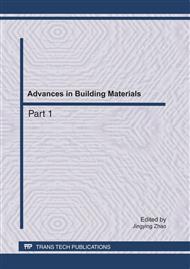p.147
p.151
p.156
p.161
p.166
p.171
p.178
p.182
p.187
Numerical Simulation on Projectile Penetrating Wedge Concrete
Abstract:
The numerical simulation method has been used to projectile penetrating concrete for many years. However, most previous research work has concentrated on the cuboids concrete model. Very few studies have been conducted to investigate the penetration process of complex concrete model. In this paper, numerical simulations of laboratory tests are conducted to show the penetration process of wedge concrete model. A double scalar damage model based on the concept of continuum damage mechanics is applied to modeling the failure of concrete. In the numerical model of wedge concrete, the wedges with different angles are modeled.
Info:
Periodical:
Pages:
166-170
Citation:
Online since:
May 2011
Authors:
Price:
Сopyright:
© 2011 Trans Tech Publications Ltd. All Rights Reserved
Share:
Citation:


